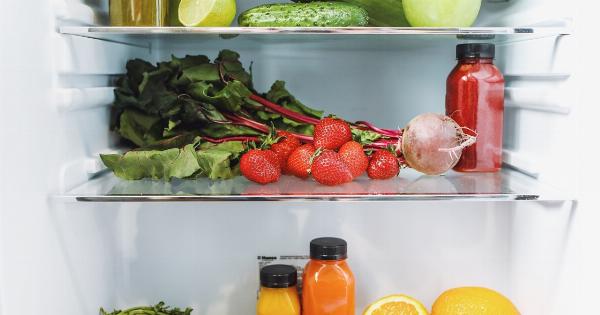Rice is a staple food for many cultures around the world, and it’s versatile enough to be paired with a variety of flavors and textures.
Reheating rice might seem like an easy way to save leftovers, but did you know that reheated rice can be dangerous?.
In this article, we’ll explore the hidden dangers of reheated rice and what the experts say about how to handle and store it properly.
1. Bacteria Growth
Rice contains spores of Bacillus cereus bacteria that can survive cooking and reheating. When cooked rice is left at room temperature, the spores can germinate, producing toxins that cause food poisoning.
Symptoms can include diarrhea, vomiting, and abdominal pain.
2. Stomach Problems
Even if the rice doesn’t contain bacterial spores, reheating it can cause problems for people with sensitive stomachs.
According to Harvard Health Blog, cold rice has resistant starch which is considered healthier than hot rice which destroys the resistant starches.
3. Increased Risk of Heart Disease
The resistant starch in cold rice not only benefits our digestion but has also been shown to reduce the risk of heart disease. Reheating rice changes the chemical properties of rice, which can increase the likelihood of developing heart disease.
4. Burn Injuries
When you microwave or reheat rice in a pan, the heat distribution can be uneven. Some parts of the rice might be too hot, while others can still be cold. This can lead to burn injuries in your mouth and throat.
5. Dehydration
The heat from reheating rice can remove moisture from the grains. Combined with the high-carbohydrate content of rice, reheated rice can cause dehydration in some people.
6. Loss of Nutrients
Cooking rice removes some of its natural nutrients, such as vitamins and minerals. Reheating rice can further damage and degrade these nutrients.
7. Changes in Texture
Reheating rice can also change its texture. Rice that’s been cooked and stored in the refrigerator can become hard and rubbery when reheated. It can also become too mushy when reheated in a microwave.
8. Risk of Fried Rice Syndrome
If you don’t properly refrigerate leftover rice, storing it at room temperature for more than four hours, it could lead to fried rice syndrome, caused by Bacillus cereus bacteria consumption.
The bacteria produces toxins that can cause vomiting, diarrhea, and abdominal cramps.
9. Allergic Reactions
If you’re allergic to rice, reheating rice leftovers puts you at risk from having an allergic reaction. This can be severe and cause anaphylaxis, which is a life-threatening reaction.
10. Food Waste
Reheating rice can also result in food waste. If you reheat rice and then throw it away because it tastes bad or is mushy, this is a waste of food and money.
How To Store and Reheat Rice Properly
While reheated rice can be dangerous, you can still safely store and reheat rice if you follow a few simple precautions:.
- Store leftover rice in an airtight container in the refrigerator and use it within a day or two.
- Cool rice quickly and make sure it’s fully cooled before storing it in the fridge.
- Reheat rice thoroughly until it’s piping hot, making sure there are no cold spots. Do not reheat it more than once.
- Try to use leftover rice as soon as possible. If you don’t think you’ll be able to eat it within a couple of days, freeze it instead.
Conclusion
Reheating rice might seem like a quick and easy way to save leftovers, but it can be hazardous to your health.
Bacteria growth, stomach problems, increased risk of heart disease, burn injuries, dehydration, loss of nutrients, changes in texture, risk of fried rice syndrome, allergic reactions, and food waste are all hidden dangers of reheated rice. By following proper storage and reheating precautions, you can enjoy rice safely and without any of these risks.































